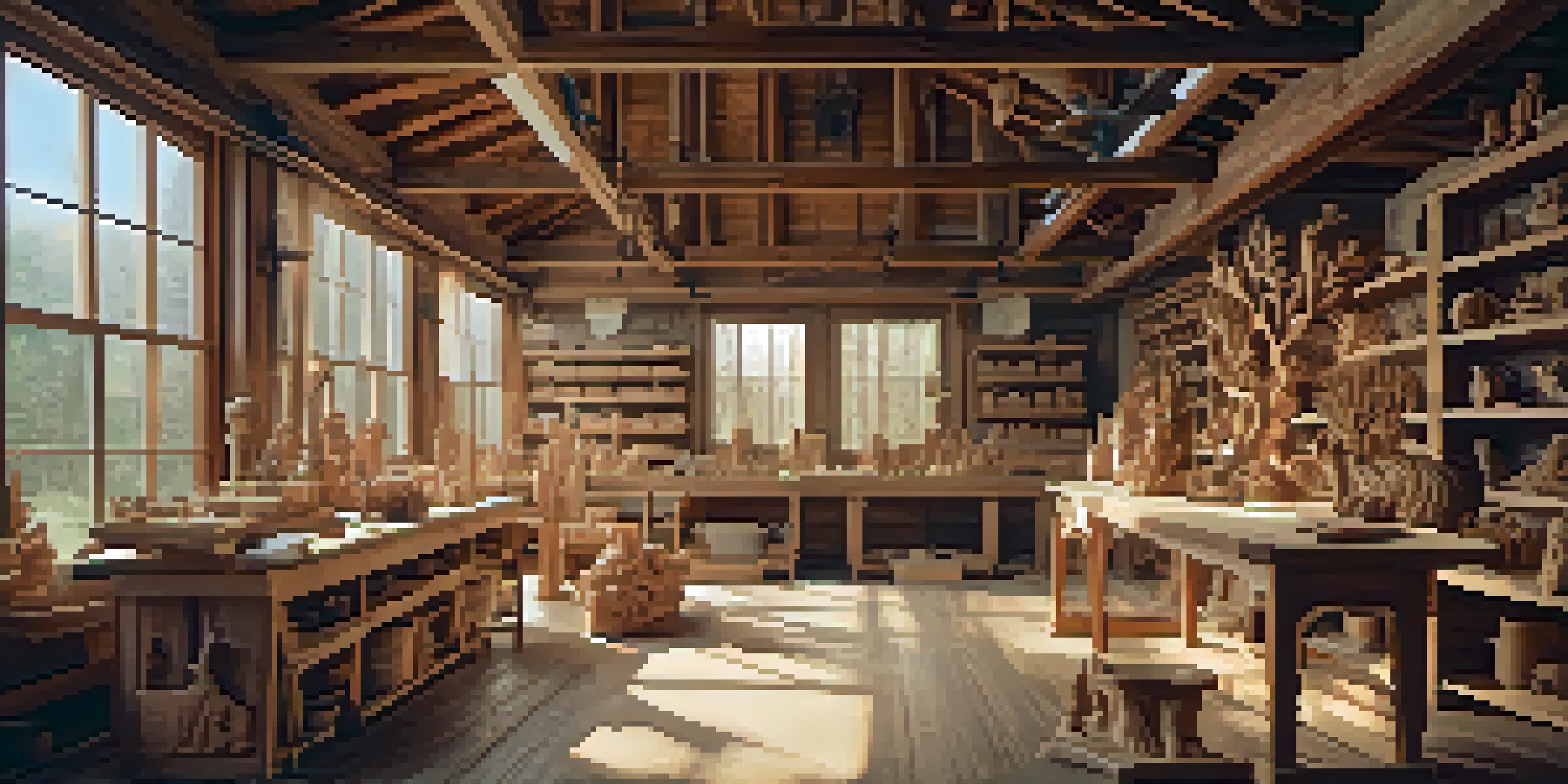Carving and Deforestation: A Closer Look at Wood Sources

The Art of Wood Carving: A Timeless Craft
Wood carving is an age-old craft that transforms raw timber into beautiful art. Often associated with cultural heritage, this practice allows artisans to express their creativity while preserving traditions. From intricate sculptures to everyday items, the versatility of carved wood captures the imagination and showcases the beauty of natural materials.
The best time to plant a tree was twenty years ago. The second best time is now.
However, as the demand for handcrafted wooden goods grows, so does the importance of sourcing wood responsibly. Carvers must consider where their materials come from and the sustainability of these sources to mitigate environmental impact. The balance between artistry and responsibility is crucial in today’s world.
By understanding the origins of the wood used in carving, artisans can make informed choices that benefit both their craft and the planet. Sustainable sourcing not only preserves ecosystems but also supports local communities that depend on forestry for their livelihoods.
Deforestation: A Global Crisis
Deforestation refers to the large-scale removal of trees, often to make way for agriculture or urban development. This practice has dire consequences for our planet, contributing to habitat loss, climate change, and biodiversity decline. The urgency of addressing deforestation has never been greater, as forests play a vital role in maintaining ecological balance.

When trees are cut down, the carbon stored in them is released into the atmosphere, exacerbating global warming. Additionally, the loss of forests disrupts the lives of countless species, pushing many toward extinction. As carvers and consumers, it's essential to recognize how our choices can either contribute to or combat this crisis.
Sustainable Sourcing is Crucial
Artisans must prioritize responsible sourcing of wood to protect ecosystems and support local communities.
Supporting sustainable forestry practices can make a significant difference. By choosing wood that is sourced from responsibly managed forests, we can help protect these vital ecosystems while still enjoying the beauty of handcrafted wooden art.
Sustainable Wood Sources: What to Look For
When selecting wood for carving, sustainability should be a top priority. Look for certifications such as the Forest Stewardship Council (FSC), which ensures that the wood is sourced from responsibly managed forests. These certifications indicate that the wood comes from suppliers who prioritize environmental conservation and social responsibility.
We do not inherit the earth from our ancestors, we borrow it from our children.
Additionally, exploring local wood sources can have positive environmental impacts. Local sourcing reduces transportation emissions and supports local economies, helping to create a more sustainable community. Carvers can also consider using reclaimed wood, which repurposes materials that would otherwise go to waste.
By being mindful of wood sources, carvers not only contribute to environmental conservation but also tell a story through their materials. Each piece of wood can reflect its journey, adding depth to the artistry while promoting a sustainable future.
The Role of Technology in Sustainable Carving
Modern technology is playing a pivotal role in promoting sustainable wood carving practices. Innovations such as computerized cutting machines and CNC routers allow artisans to minimize waste during the carving process. By optimizing material usage, these technologies can lead to more efficient production and reduced environmental impact.
Moreover, technology can aid in tracking wood sources. Digital platforms can provide transparency about the origins of materials, ensuring that they come from sustainable sources. This not only helps carvers make informed decisions but also empowers consumers to support eco-friendly practices.
Technology Enhances Sustainability
Modern technology aids in reducing waste and tracking sustainable wood sources, bridging traditional techniques with eco-friendly practices.
As technology continues to evolve, it presents new opportunities for artisans to combine traditional techniques with modern sustainability practices. This blend of old and new can enhance the craft while protecting our forests for future generations.
Community Involvement in Sustainable Practices
Communities play a crucial role in promoting sustainable wood carving practices. Local initiatives that focus on reforestation and sustainable forestry can create a positive impact on both the environment and the economy. By working together, artisans, consumers, and local organizations can foster a culture of sustainability that benefits everyone.
Engaging with local communities allows carvers to learn about traditional practices that prioritize environmental stewardship. These practices often include selective logging and nurturing younger trees, ensuring that forests remain healthy and productive. By incorporating these methods, carvers can contribute to the longevity of their resources.
Additionally, community workshops and educational programs can raise awareness about the importance of sustainable sourcing. By sharing knowledge and resources, communities can empower individuals to make informed choices that support both artistry and conservation.
Consumer Responsibility: Making Informed Choices
As consumers, we hold significant power in influencing sustainable practices in the wood carving industry. By choosing to purchase products made from responsibly sourced wood, we send a message that sustainability matters. This demand encourages artisans and manufacturers to prioritize eco-friendly practices in their work.
It's essential to research the brands and artisans we support, asking questions about their sourcing methods and sustainability efforts. Many businesses are now transparent about their practices, providing information that can guide consumers in making ethical decisions. Being an informed consumer not only benefits the environment but also supports artisans who prioritize sustainability.
Consumer Choices Matter
Informed consumer purchases can drive demand for responsibly sourced wooden products, influencing industry sustainability.
Ultimately, every purchase we make can contribute to a larger movement toward sustainability. By choosing wisely, we can help ensure that the art of wood carving continues to thrive without compromising the health of our planet.
The Future of Wood Carving and Sustainability
The future of wood carving lies in the balance between artistry and environmental stewardship. As awareness of deforestation and its impacts grows, the demand for sustainable practices in the industry will likely increase. This shift presents an opportunity for artisans to innovate while committing to responsible sourcing.
Emerging trends such as the use of alternative materials and eco-friendly finishes can also play a significant role in the evolution of wood carving. By exploring new avenues, artisans can create beautiful pieces that align with their values and resonate with environmentally conscious consumers.

Ultimately, the journey toward sustainability in wood carving requires collaboration among artisans, consumers, and communities. By working together, we can ensure that this cherished craft continues to flourish for generations to come, all while protecting our precious forests.